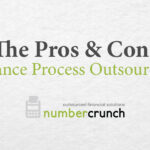As we head into another period of economic uncertainty purse strings may be tightened – and that means access to incremental working capital may be low if not impossible to secure. Unless you are the rare SaaS company that has already achieved profitability, you are likely dependent on investors and lenders to keep your business plans on track. With an unpredictable future you might want to double down on some key fundamentals to minimize any impacts. We’ve put together some thoughts on how you can future-proof your B2B SaaS startup to remain relevant and at the top of your game through periods of uncertainty.
- Ensure your product is core to your customers business.
A ‘need’ vs a ‘want’ with an easily understood value proposition. It’s really got to be a game changer solution that has a measurable benefit that you can demonstrate with existing customer data. If your product offers a “nice-to-have” not a “need-to-have” solution you are going to be the first cost cut when your customers decide to tighten their purse strings. Start emphasizing that need to your market and current customers now to minimize economic-related churn. - Charge customers up front to use your product.
In other words, bill annually in advance if possible. The obvious advantage here is that it gets cash in the door sooner. If you already went to market with a monthly payment plan then offer an incentive to switch to annual-in-advance billing to stockpile cash quickly. - Focus on the lower hanging fruit.
Focus first on the less sophisticated SMB segment which doesn’t demand the compliance, heavy security and integration features needed by enterprise customers. It also generally has a shorter sales cycle and therefore can lead to faster time to revenue. A common issue is trying to sell to different segments at the same time. We would discourage splitting your attention and cash on other segments until you’ve hit $1M ARR (annual recurring revenue). - Be cost effective with customer acquisition.
You likely intend to have an efficient sales model, but do you know what you should be budgeting? Well – there is some fairly simple math we can use to calculate what your CAC (customer acquisition cost) should be. Just take 80% of your annual subscription fee. So let’s say you charge $10,000 for your annual subscription, you’ll want your CAC to be less than $8,000. And if you expect to sign up 10 customers per month that infers an appropriate budget of $80,000/month on Sales & Marketing. Of course you need to ensure you have the cash on hand to actually spend on this – but the point is to review your activities and be intentional on how you spend your precious resources. - Contain your costs until you hit $1M in ARR.
Don’t be a spendthrift with your start up funding. Consider your path to profitability. Keep in mind profitability infers your revenues exceed your expenses and generally a SaaS company needs to hit revenues of at least $1-2M before they reach profitability. The best way to contain costs in the early days is to focus energy on your target customer, and use tactics like mock-ups and A/B testing before building. Measure twice, cut once concept.
Overall when it comes to preserving cash or future-proofing your business, we’d suggest simplifying and focusing. And if you find yourself needing to pull back and cut costs, we can help you sort through your options and still ensure you keep progress happening. If you’d like to speak with a SaaS finance pro at numbercrunch, please contact us for more information and we can help you plan strategically for a period of uncertainty.










